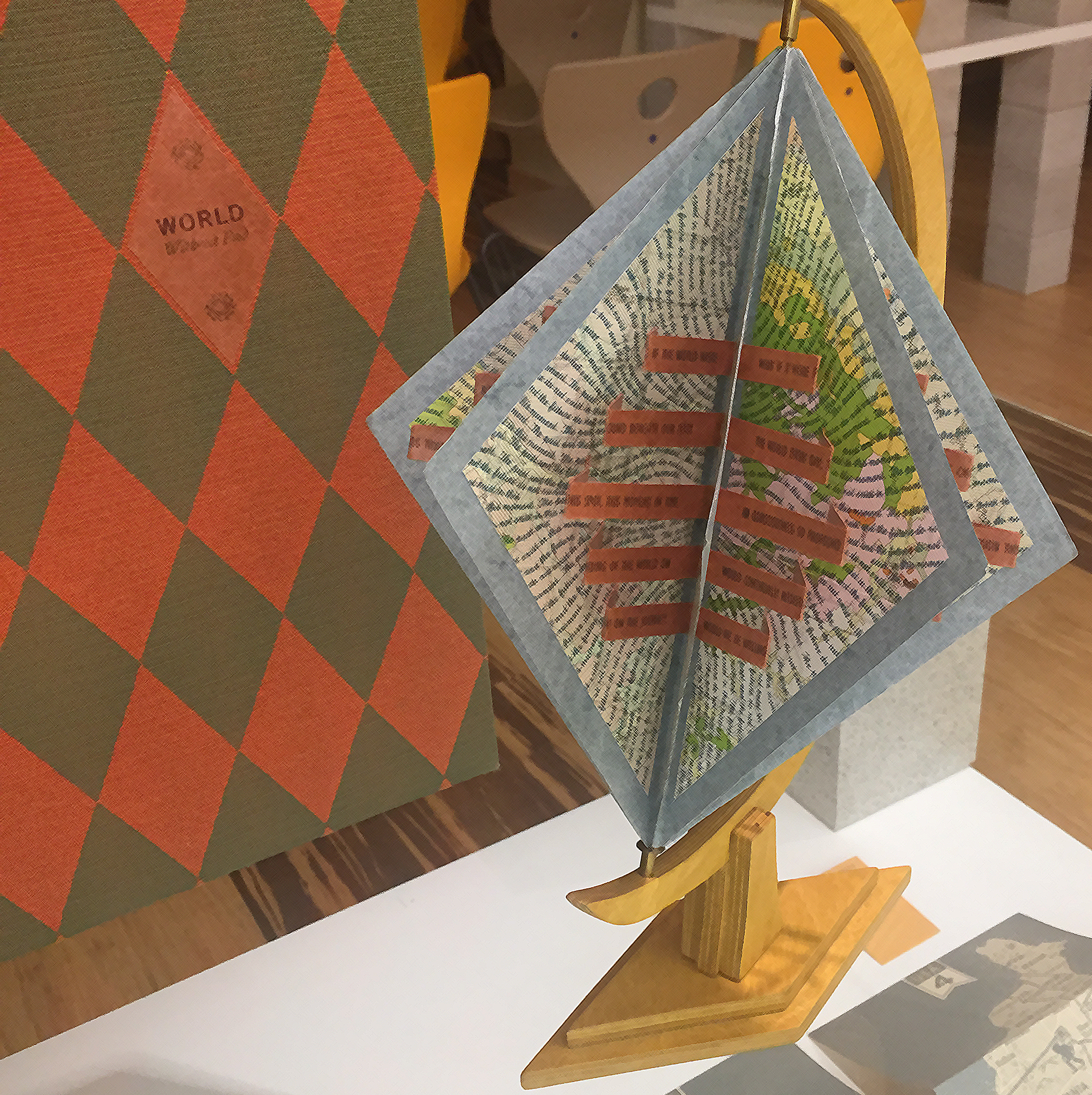Books as Aesthetic Objects


By Melissa Jay Craig
2002
To appreciate the scope of the Jaffe Collection, take a giant mental leap: before you stand two objects, the Cranach Press 1930 edition of Hamlet and Melissa Craig’s three-foot tall fiber creation, “Working Philosophy.” How do you make the connection between them, and above all, how do you recognize both entities as books? Because both are at home in the Arthur and Mata Jaffe Collection of Books as Aesthetic Objects, there is both a personal and a public response to these questions: as the Jaffe Collection grew, the definition grew, and as the definition grew, both works took their places. If you were to put both objects vertically in a bookcase, they might appear as distant cousins: both look like ordinary books, with ribs on their spines in one case marking, in the other suggesting, that their covers contain bound pages. Only one of them, of course, is a book in the traditional sense; the other is an ‘artist’s book,’ a sculpture, the creation of someone with the obvious intent to evoke book, but with the creative spirit to produce something unique.
Perhaps thirty years after purchasing the Cranach Hamlet, Arthur went to an exhibition, in an industrial section of Pittsburgh where he had never been, showing works of art from Lafayette College in a room that was used to teach letterpress printing. Even in that grim room, Arthur immediately identified Melissa Jay Craig’s “Working Philosophy (Volume 1)” for the collection. His bibliophilic tastes had by this time expanded into the recognition that books could express beauty and meaning without words, without traditional pages or traditional forms.
Arthur says that his choice of this particular book from among the others displayed reminds him of seeing his first wife from across the room. “It was her presence,” he says, “the way she stood, the way she held her head, the way everyone around her seemed to be relating only to her. I knew that I would choose this one woman from among the many others who were there.”
In his work here, Arthur has become conscious of the “inner voice” that sounds unnoticed in our heads as we silently read traditional books. I asked him to consider an inner voice that speaks to us as we ‘read’ “Working Philosophy (Volume 1)” Seated before the work, he muses on its unwritten story: its ‘bark’ speaks to him of its organic quality, and he comments on “the brilliant eye that sees the ‘bookness’ in a tree trunk.” It reminds him of the idea of nature as tradition, that is, as something old in our surroundings, something that reveals a kind of memory and record for us, just as books do. We take the smaller book from within the empty covers: here the tree metaphor again meets the book metaphor as we look at its ‘leaves.’ Arthur comments on the idea of growth and deterioration emanating from this work: the first pages of the book are tiny, growing larger towards the middle, and diminishing again. The touch of red in the book cover reminds Arthur of bot h birth and death even as it gives a purely aesthetic accent to the piece. The small book, he says, the child born of the larger outer cover, is blank the way a human life is born blank, the tabula rasa of the romantic. Works of art give us both general and particular messages – in this case events in Arthur’s lifespan lead him to read the red color and deterioration as signals not just of the natural death of life, but the Nazis’ deliberate destruction of books by burning them. The work becomes a map not just of the maker’s mind, but the viewer’s mind, the ‘reader’s’ mind.
Notes from Arthur’s archives reinforce his interpretation. In an email to Arthur, Melissa J Craig wrote: “Working Philosophy (Volume 1)” is a piece in a body of work that’s spanned about six years. I began by comparing and contrasting the cyclical pattern of the way people acquire, use, and file away information with patterns of regeneration in nature. Originally the forms were made from altered existing books. When the concept was confined with daily walks on 65 acres of virgin prairie and woodlands at Ragdale, and my early experiments with the unconventional use of papermaking mediums, it led to forms that were simultaneously booklike and paperlike, or booklike and treelike.
On a personal level, as I was developing this work, I learned that I had a severe, progressive hearing loss, and that there is a strong probability that I will eventually become completely deaf. Your book is one of the works in which I am also looking at (or looking for!) the beauty, dignity, and a bit of humor in the natural transformational process of decay. The “pages” are fungus-like, eroding away the original form, transforming it into something else, but with a beauty and a narrative presence of their own. The humor and some of the form’s resonance comes simply from the visual similarity of fungus to book pages, and also from the fact that the actual books most likely to erode in such a way are those made from wood pulp originally.
Elsewhere, in an introduction to her work, Melissa Jay Craig says: "My first interest in the book in relation to my art was in its traditional form as a vehicle of information... My work now focuses on the book as object, as container, as multileveled metaphor, and, ultimately, it has come full circle as the vehicle for my personal aesthetic explorations."
Arthur not only reads the book as she intended, but he shares this treasure with the people who come to see Melissa Jay Craig’s book, encouraging them to find, as he has, a personal interpretation as well as to see the intention of the artist.
- Judith Klau